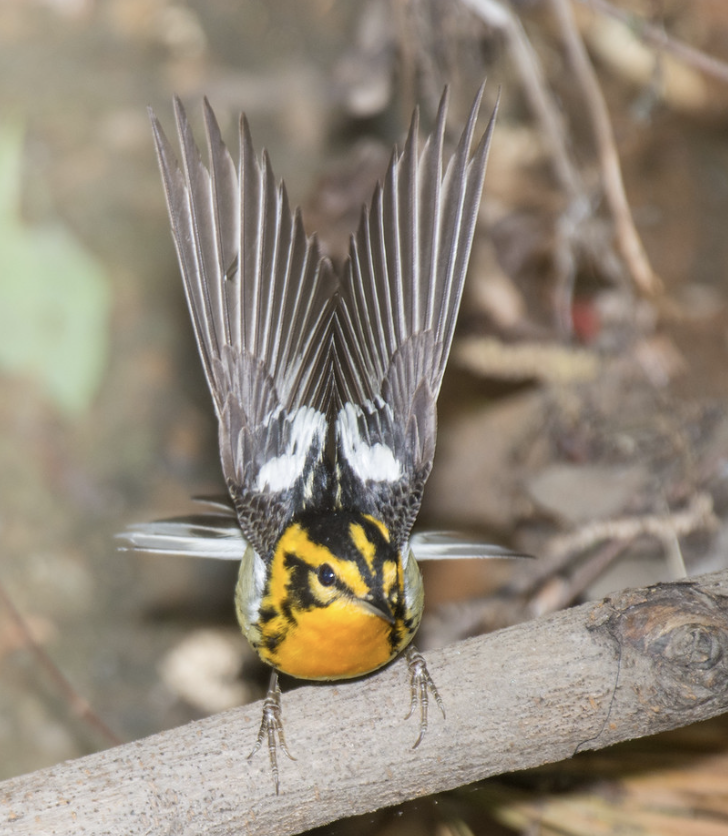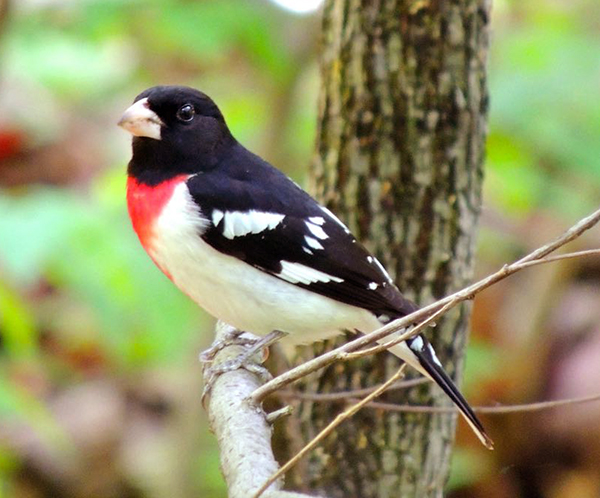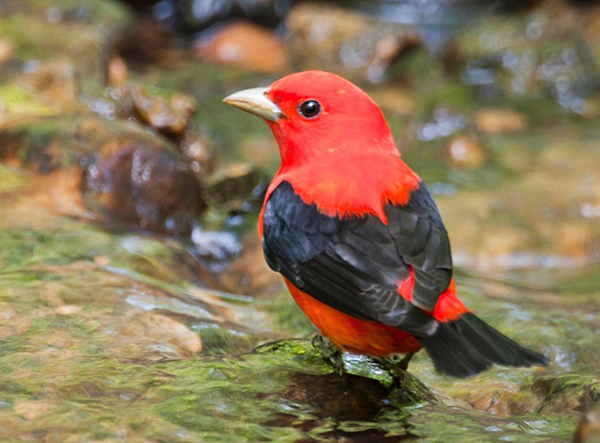
-
About
The Website The Birds Maps Virtual Tour Email us
- Library
- Essays
Eric Dinerstein Bill Young- Plants
- Birds
The Birds at Monticello Park
Monticello Park is well known for being one of the best places in the Washington Metro Area to see migrating songbirds during the spring. Three main factors contribute to Monticello Park's attractiveness to both birds and birders.
 Blackburnian Warbler - Photo by William Higgins
Blackburnian Warbler - Photo by William Higgins• The park is on a tree-covered ridge, and migrating birds see this small oasis as a place to land and feed.
• The park has a stream running through it, and many birds who usually stay high in the trees come down to drink and bathe, allowing birders and photographers to get close views.
• The park is only 6.25 acres, and if birds are in the park, people have a reasonable chance to see them. Many larger parks have more birds, but seeing them is much more difficult than at Monticello, since they might be spread out across a larger area.
Monticello Park does not follow the rules for the time of day when people are most likely to see birds. At most other locations, people try to arrive early in the morning, because migrating birds who have been flying all night tend to actively feed during the first four hours of daylight. After that, the birds often rest, and there is little activity. At Monticello, almost any time of day can be active. People can see birds early in the morning, in the middle of the day, or in the late afternoon.
 Rose-breasted Grosbeak - Photo by William Young
Rose-breasted Grosbeak - Photo by William YoungBirders at Monticello use different strategies to look for birds. Some use a "hunting" strategy, looking for birds as they walk around the park. Others use a "fishing" strategy, staying in one spot and waiting for the birds to come to them. The fishing strategy is popular with photographers and people with limited mobility. Either strategy can be highly productive.
At first glance, Monticello does not seem as if it would be a good location to see birds. The park is only an eighth of a mile from one end to the other, with the stream running down the middle. Houses are on three sides, and Beverley Drive is on the fourth. The habitat is degraded, with a lot of dead and dying trees, some of which have fallen. However, the dead trees are often full of insects and are very attractive to hungry songbirds on a migration stop.
 Scarlet Tanager - Photo by William Higgins
Scarlet Tanager - Photo by William HigginsMonticello Park should not be confused with Thomas Jefferson's home in Charlottesville. The park is in an Alexandria neighborhood called "Beverley Hills". This Beverley Hills has an extra "e," and the zip code is 22305 rather than 90210. For much of the year, area residents regard the park as a place to walk their dog or to get some fresh air. But for about five weeks from the latter part of April until Memorial Day, Monticello is full of birders and nature lovers. It is also a stopping point for birds in the autumn on their way south to their wintering grounds, but not as many birds or birders visit then as during the spring. Very few migrant birds nest at Monticello, so for the periods outside of migration, you are likely to see only the year-round and winter resident species.
Some birders spend a lot of hours at the park every spring. Many of these birders have gotten to know each other, and an informal community has formed. If you are new to the park, you usually can find one of the regulars who can tell you what birds are being seen and the best places to look for them. Many birders are friendly and enjoy sharing information about the creatures who delight them. After Memorial Day when the birding crowds have left is a good time to turn your attention to the plants and arthropods in the park.
The eBird Hotspot Page for the park lists sightings of birds in Monticello Park that have been reported to the eBird website. It lists the sightings chronologically, so that you can see what has been reported most recently at the top of the list.